Markus Stäuble
The Control Toolbox - An Open-Source C++ Library for Robotics, Optimal and Model Predictive Control
Mar 26, 2018
Abstract:We introduce the Control Toolbox (CT), an open-source C++ library for efficient modeling, control, estimation, trajectory optimization and Model Predictive Control. The CT is applicable to a broad class of dynamic systems but features interfaces to modeling tools specifically designed for robotic applications. This paper outlines the general concept of the toolbox, its main building blocks, and highlights selected application examples. The library contains several tools to design and evaluate controllers, model dynamical systems and solve optimal control problems. The CT was designed for intuitive modeling of systems governed by ordinary differential or difference equations. It supports rapid prototyping of cost functions and constraints and provides standard interfaces for different optimal control solvers. To date, we support Single Shooting, the iterative Linear-Quadratic Regulator, Gauss-Newton Multiple Shooting and classical Direct Multiple Shooting. We provide interfaces to general purpose NLP solvers and Riccati-based linear-quadratic optimal control solvers. The CT was designed to solve large-scale optimal control and estimation problems efficiently and allows for online control of dynamic systems. Some of the key features to enable fast run-time performance are full compatibility with Automatic Differentiation, derivative code generation, and multi-threading. Still, the CT is designed as a modular framework whose building blocks can also be used for other control and estimation applications such as inverse dynamics control, extended Kalman filters or kinematic planning.
Automatic Differentiation of Rigid Body Dynamics for Optimal Control and Estimation
Jan 16, 2018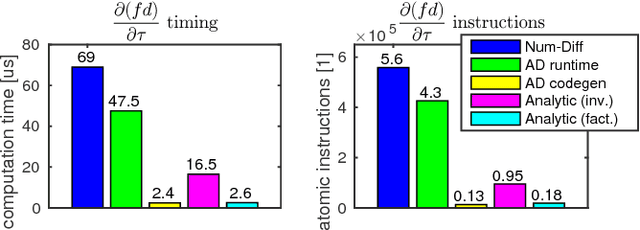
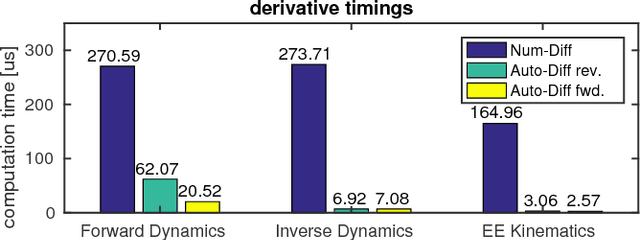
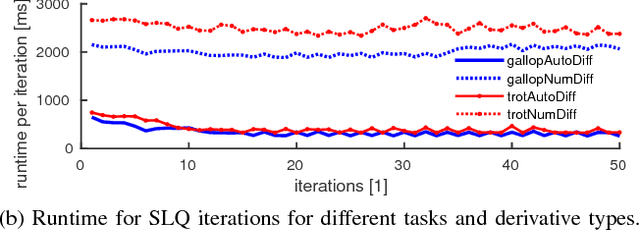
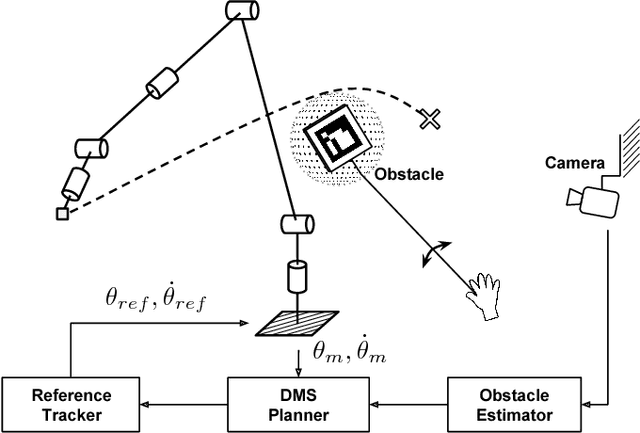
Abstract:Many algorithms for control, optimization and estimation in robotics depend on derivatives of the underlying system dynamics, e.g. to compute linearizations, sensitivities or gradient directions. However, we show that when dealing with Rigid Body Dynamics, these derivatives are difficult to derive analytically and to implement efficiently. To overcome this issue, we extend the modelling tool `RobCoGen' to be compatible with Automatic Differentiation. Additionally, we propose how to automatically obtain the derivatives and generate highly efficient source code. We highlight the flexibility and performance of the approach in two application examples. First, we show a Trajectory Optimization example for the quadrupedal robot HyQ, which employs auto-differentiation on the dynamics including a contact model. Second, we present a hardware experiment in which a 6 DoF robotic arm avoids a randomly moving obstacle in a go-to task by fast, dynamic replanning.
A Family of Iterative Gauss-Newton Shooting Methods for Nonlinear Optimal Control
Dec 11, 2017
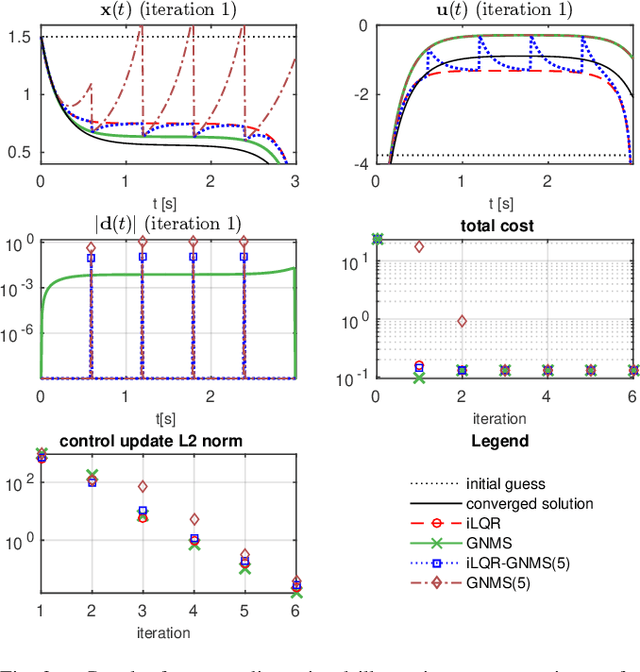
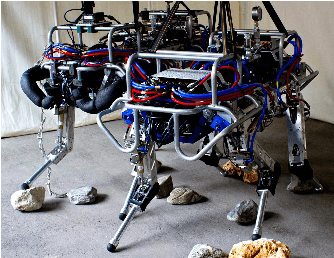

Abstract:This paper introduces a family of iterative algorithms for unconstrained nonlinear optimal control. We generalize the well-known iLQR algorithm to different multiple-shooting variants, combining advantages like straight-forward initialization and a closed-loop forward integration. All algorithms have similar computational complexity, i.e. linear complexity in the time horizon, and can be derived in the same computational framework. We compare the full-step variants of our algorithms and present several simulation examples, including a high-dimensional underactuated robot subject to contact switches. Simulation results show that our multiple-shooting algorithms can achieve faster convergence, better local contraction rates and much shorter runtimes than classical iLQR, which makes them a superior choice for nonlinear model predictive control applications.
Whole-Body Nonlinear Model Predictive Control Through Contacts for Quadrupeds
Dec 07, 2017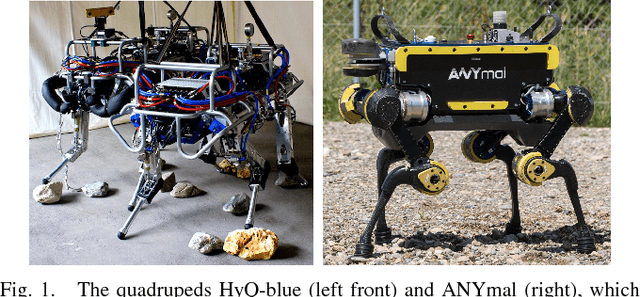
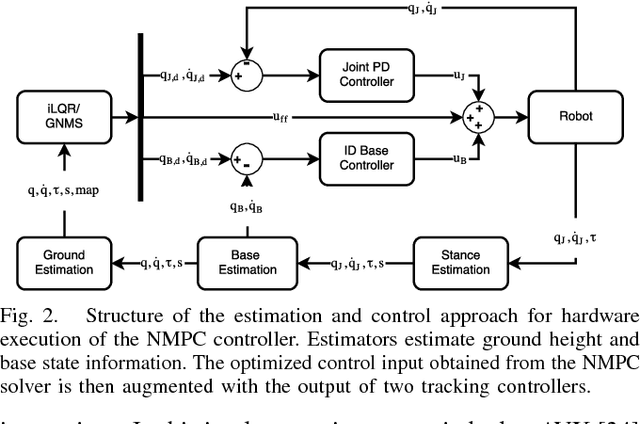
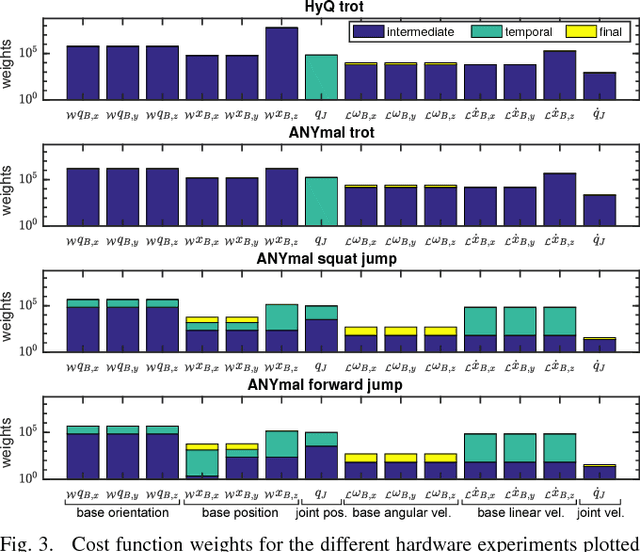
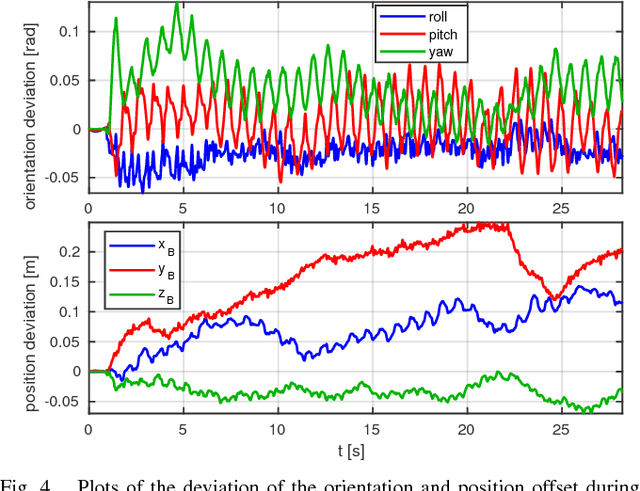
Abstract:In this work we present a whole-body Nonlinear Model Predictive Control approach for Rigid Body Systems subject to contacts. We use a full dynamic system model which also includes explicit contact dynamics. Therefore, contact locations, sequences and timings are not prespecified but optimized by the solver. Yet, thorough numerical and software engineering allows for running the nonlinear Optimal Control solver at rates up to 190 Hz on a quadruped for a time horizon of half a second. This outperforms the state of the art by at least one order of magnitude. Hardware experiments in form of periodic and non-periodic tasks are applied to two quadrupeds with different actuation systems. The obtained results underline the performance, transferability and robustness of the approach.
 Add to Chrome
Add to Chrome Add to Firefox
Add to Firefox Add to Edge
Add to Edge